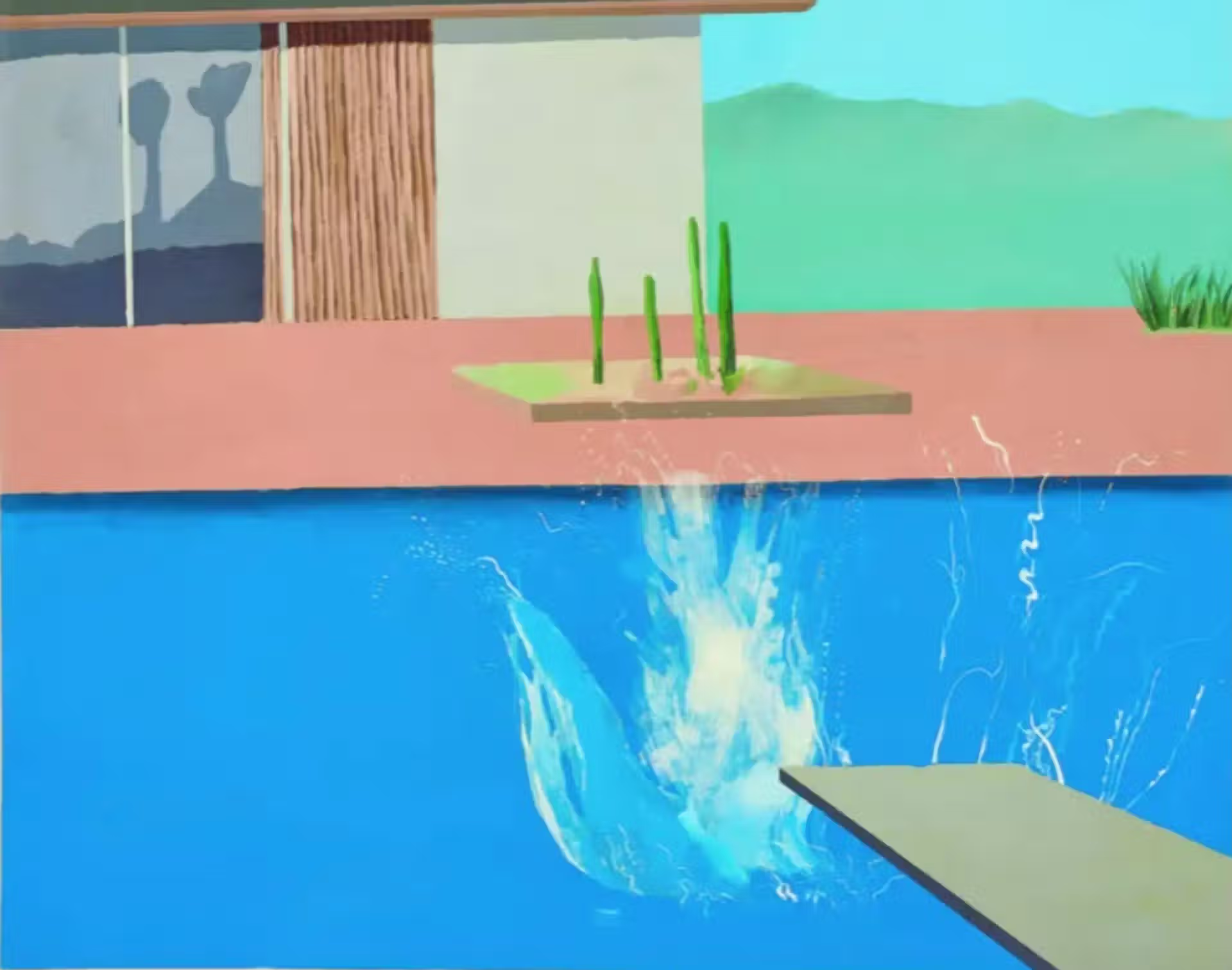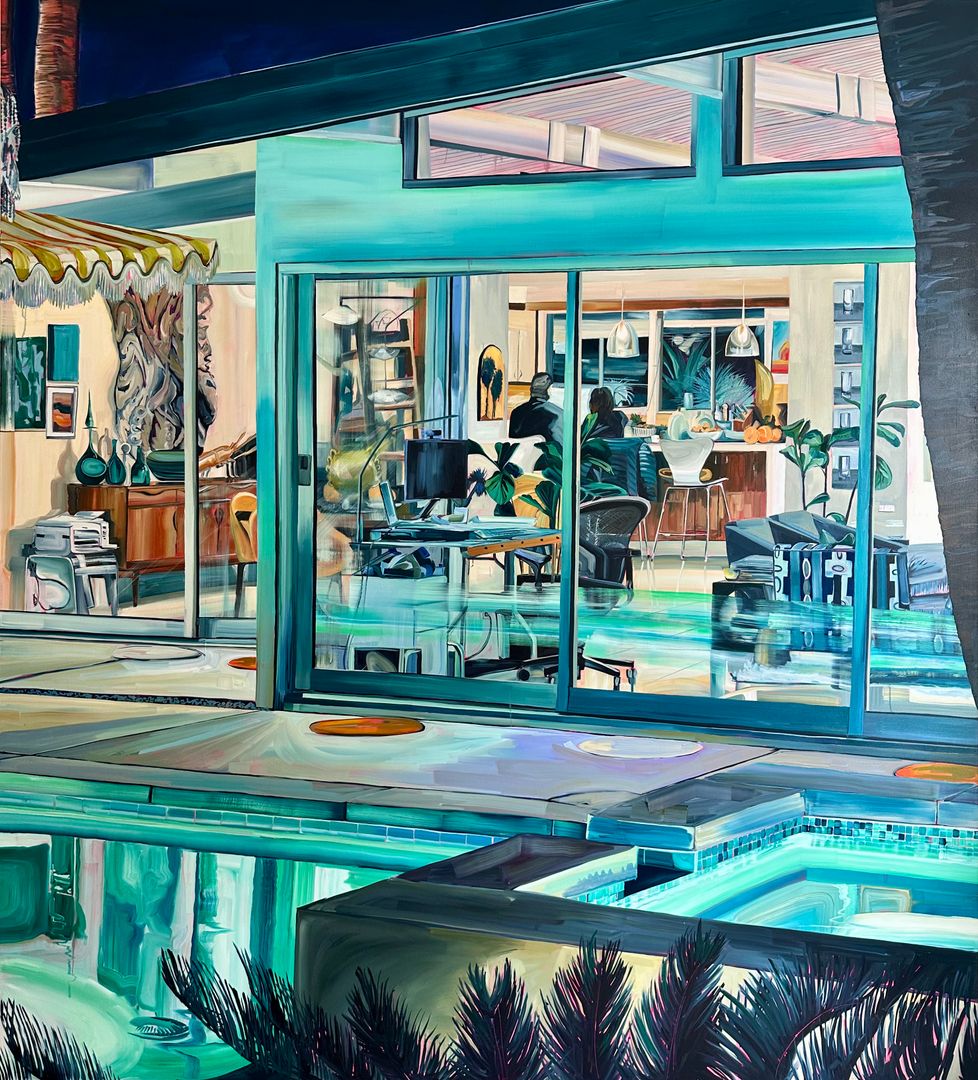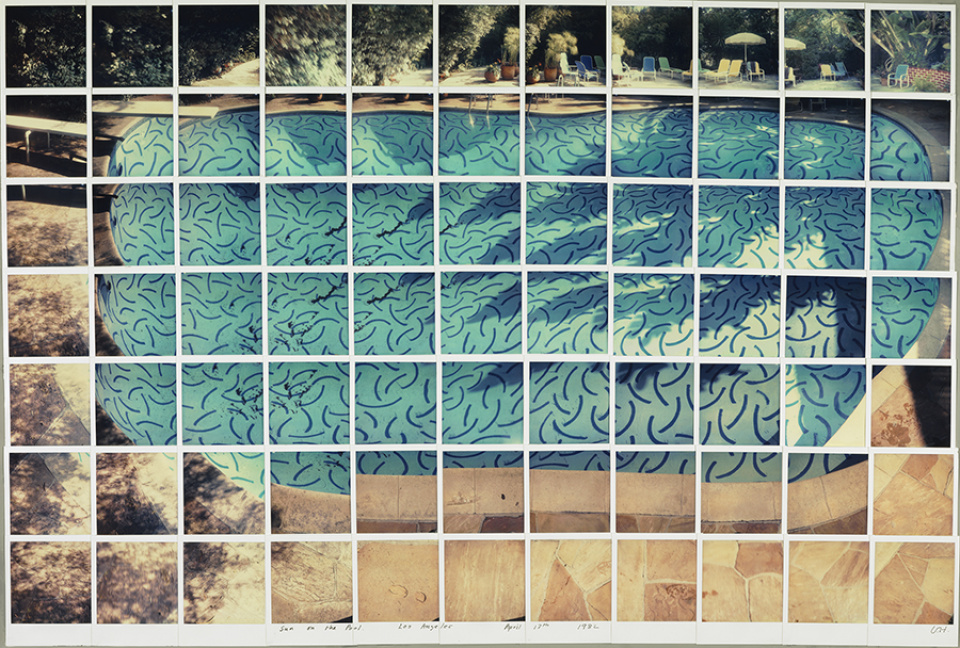“The world is very, very beautiful if you look at it. But most people don’t look very much. They scan the ground in front of them so they can walk, but they don’t really look at things incredibly well, with intensity. I do, and I’ve always known that.”
– David Hockney

The English colourist David Hockney – who featured in Unit London’s group exhibition London Calling – has called for people to pay more attention to their surroundings and, where possible, immerse themselves in nature. At the heart of this idea is a love and appreciation for space and colour, which is where he strongly aligns with Unit London’s Rex Southwick – whose latest work is on display at the gallery until June 17th. Southwick also tries to look at things closely and see things in their entirety. Speaking after his recent trip to Palm Springs, where he undertook an artist residency and studied the city’s domestic construction sites, Southwick said: “You have the workers, the maintenance, the sun, the heat, stuff dying, stuff being ripped out. Now we live in an age where everything is super presentable. Everything online is presented and it’s filtered, and you get this very glamorised, warped vision of places, which I certainly did have. And then the reality is that there is this flip-side.”

Hockney and Southwick both moved to the West coast of America in their mid-twenties: Hockney to LA, Southwick to undertake a residency in Palm Springs. Both artists were highly influenced by the rugged landscapes and desert foliage found in that part of the world – the palm tree is a recurring motif in both artists’ work – as well as the infamous, penetrating light. Photography was a key part of Hockney’s artistic output at this stage, but he found the medium lacking, famously saying “Photography is useful if you like the perspective of a paralysed cyclops.” So he began to create joiner collages from Polaroid and 35mm prints, bringing multiple photographs together in a patchwork composition that would give the medium of photography more depth and emotion. It became more about space than surface.

Photography also plays a large role in Southwick’s practice. He has an archive of images taken in the public spaces of Palm Springs and the private homes of its residents. These vignettes are captured using black and white film, a medium that picks up the gradient of light better than colour film or digital, providing the viewer with a better understanding of space and texture. The colour palette that will eventually be used is already at the forefront of Southwick’s mind, so is secondary at this initial stage.
“I photograph a lot. Every day I walk around and photograph houses and workers and meet with contractors and see what’s going on and get tip-offs of who’s building what. I have thousands of photos. Before painting, I go through them on my iPad and work out what I like, what people are interesting, what scenes are interesting, what narrative can be created.”
– Rex Southwick
Topia – the title of Southwick’s current exhibition – is a Latin word used to describe areas that are composed of natural and artificial elements. Southwick, like Hockney, is interested in how nature interacts with the built environment, and how it can be captured on canvas. Hockney is fascinated by swimming pools: a natural element contained in a manmade structure. He’s interested in plants and gardens, and fields and farms. Southwick’s work revolves around similar ideas of nature being contained or tamed and subsequently being uncontainable and untameable. He looks at how a perfectly constructed domestic environment can have the appearance of a semi-natural setting and then reveals the labourers who’re responsible for creating this illusion. In Southwick’s opinion Desert Palisades, a housing complex in Palm Springs, is a perfect example of this: “It’s this communal living site which is meant to be undisturbed. They said ‘We want to build the house on the landscape and not disturb it.’ But the reality is they obliterate the landscape and then re-naturalize it. It’s false.” This kind of man-made faux-natural setting is everywhere. Even in England, we need to look no further than the network of canals that connect London and the Midlands. Southwick alludes to the fact that when the Romans invaded Britain the landscape was 98% rural, going on to state: “the great, remote pastoral scenes of England, of rolling fields and sheep. It is actually completely man-made”. Hockney takes great inspiration from the English countryside. Being there is a chance to anchor oneself in the present moment, to value the intensity and ephemerality of a particular visual experience.

The tension between the natural and artificial is at the core of both artist’s work, as is a love and appreciation for colour, and for looking closely. It seems likely both artists were taken in by California due to the pronounced conflict between urban and rural life. The never-ending construction of luxury homes in breathtaking natural settings, the rows of domestic swimming pools and lavish gardens with tropical plants all serve as great inspiration for both artists. Add to this the presence of ‘true’ nature not too far away: deserts and canyons and mountains which can be discovered, traversed, photographed and finally painted, all in clear and reliable light, and you have a beguiling prospect for any artist, let alone two colourists interested in nature.